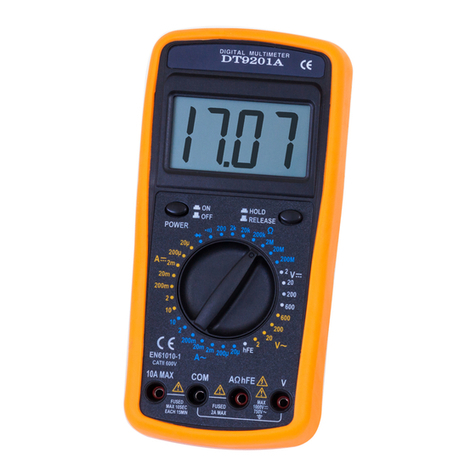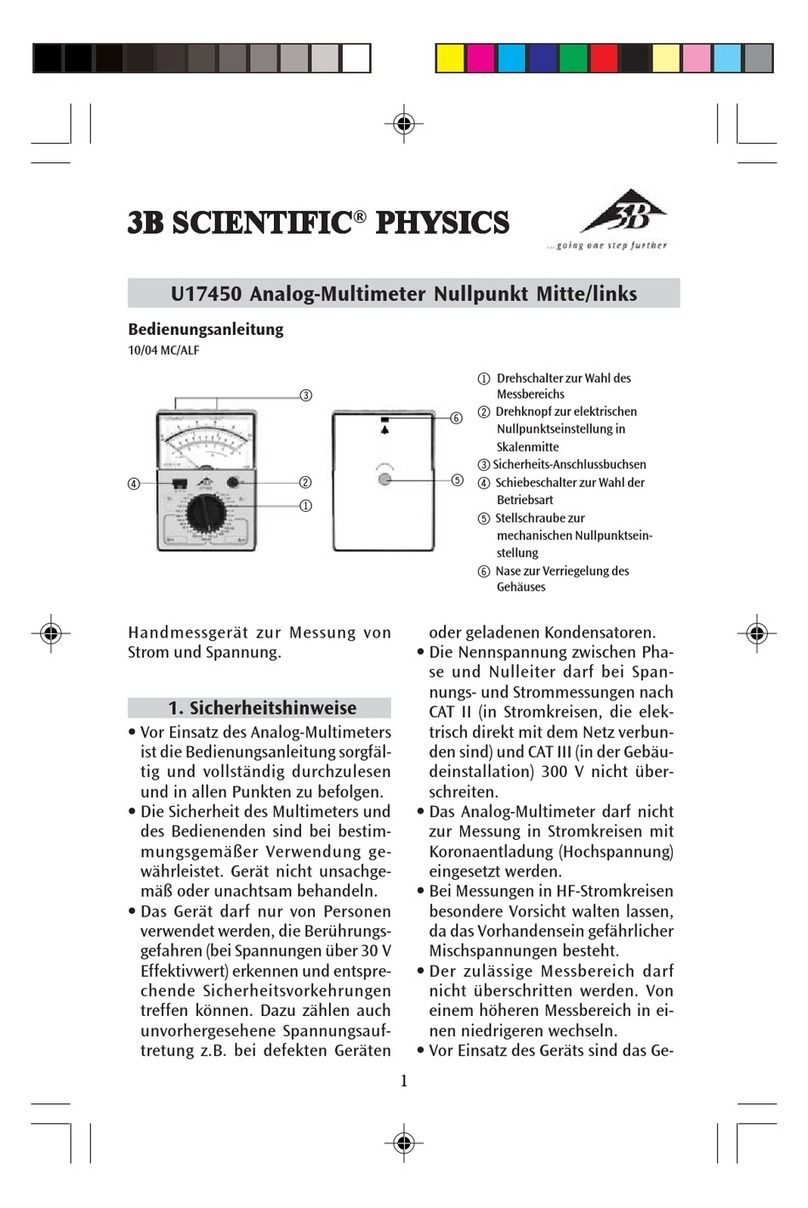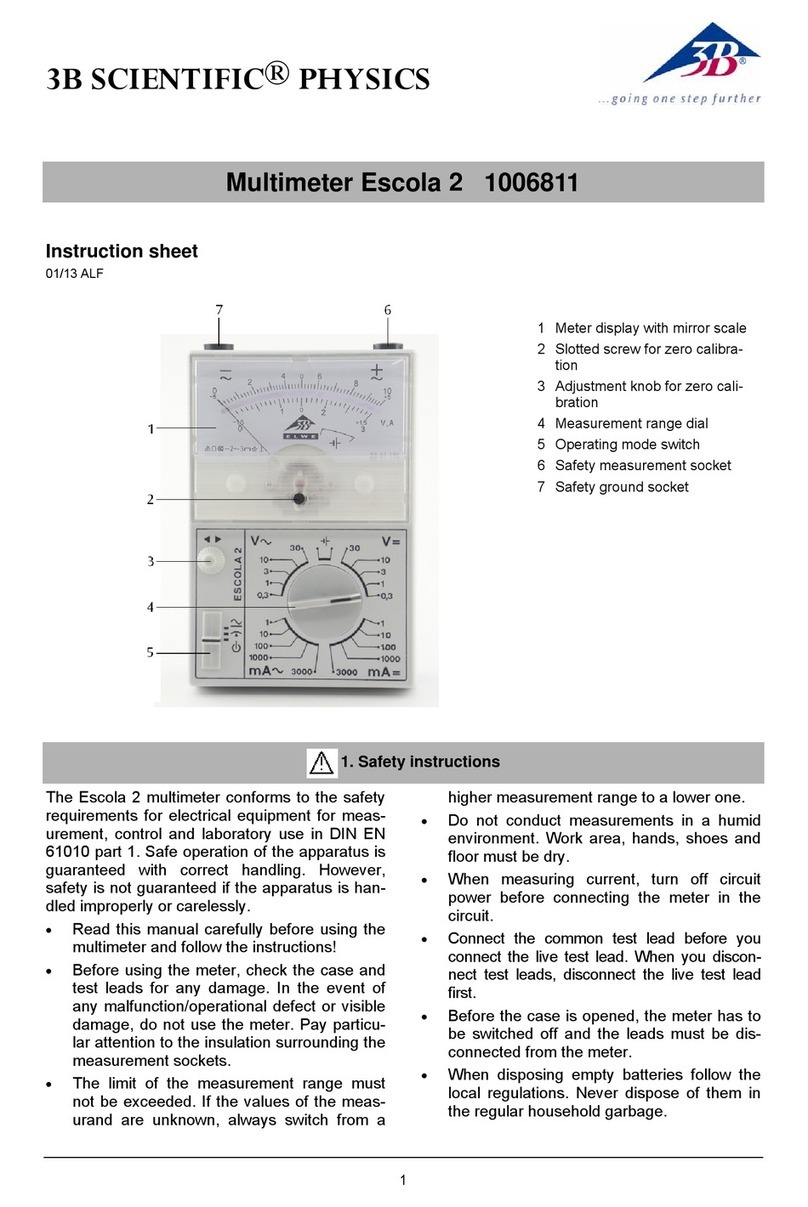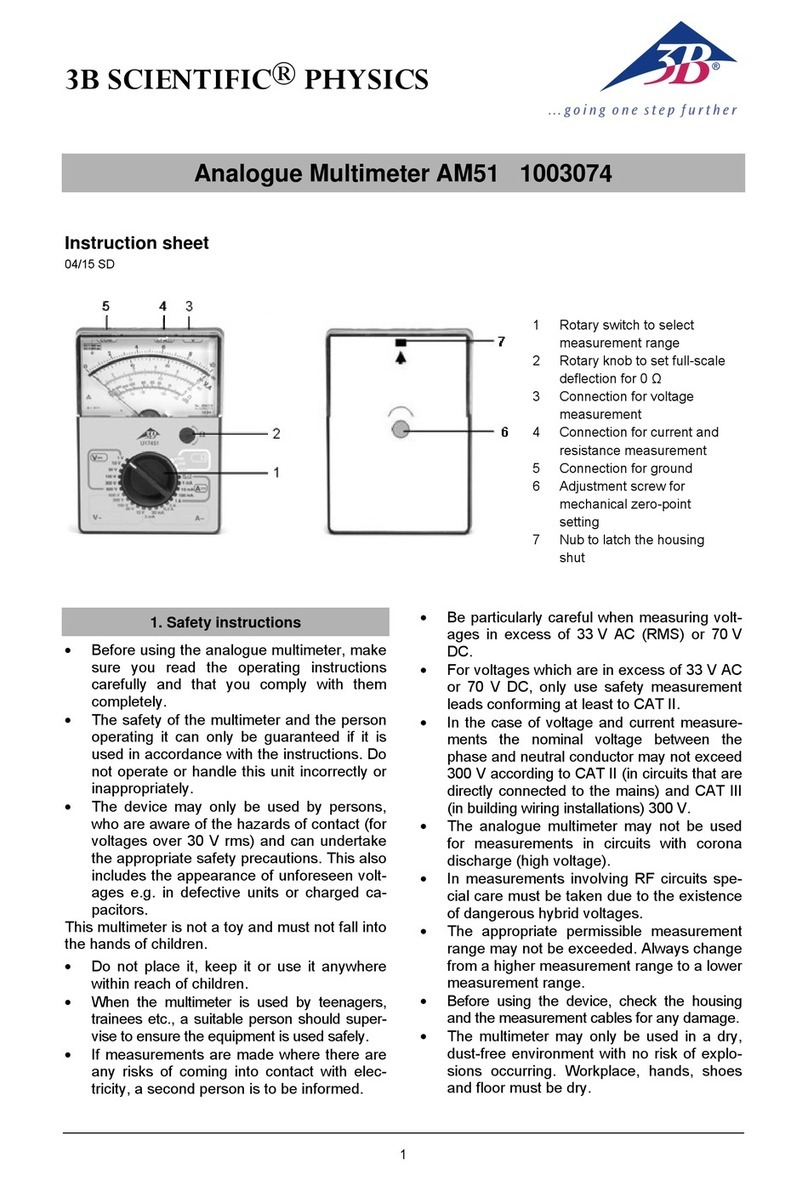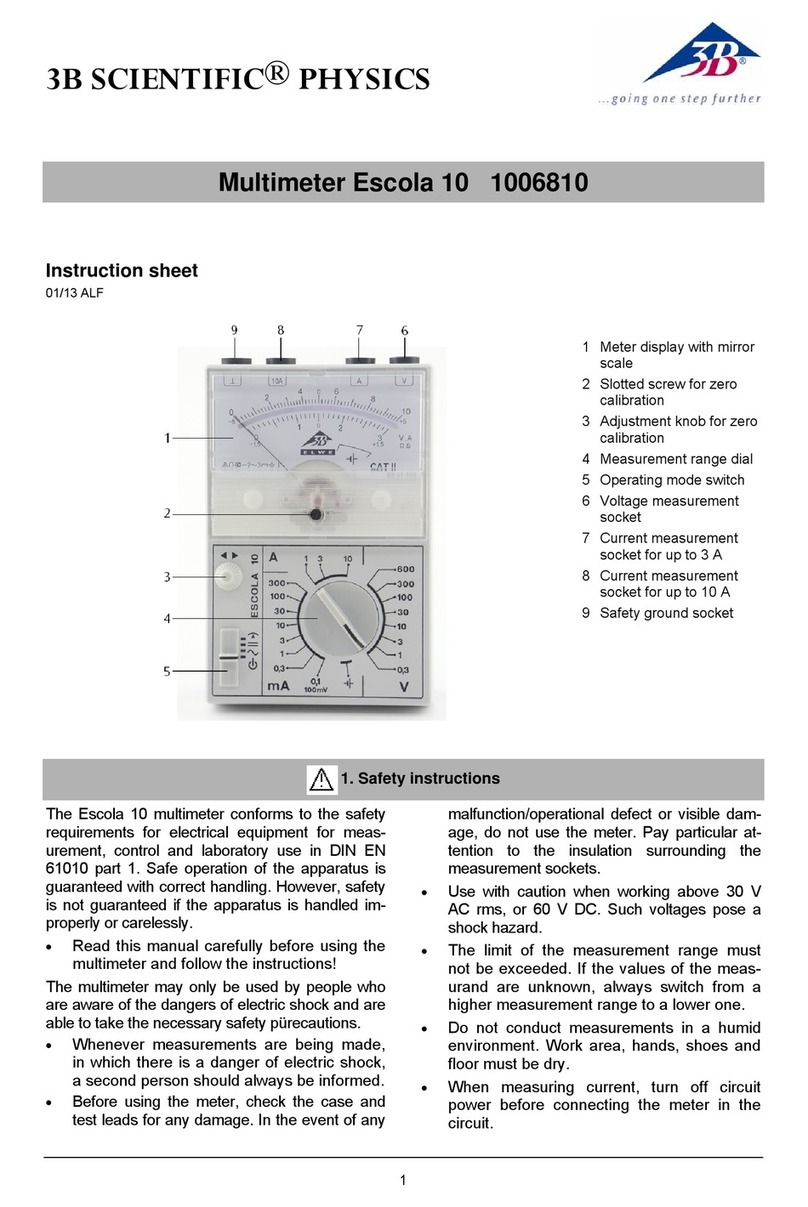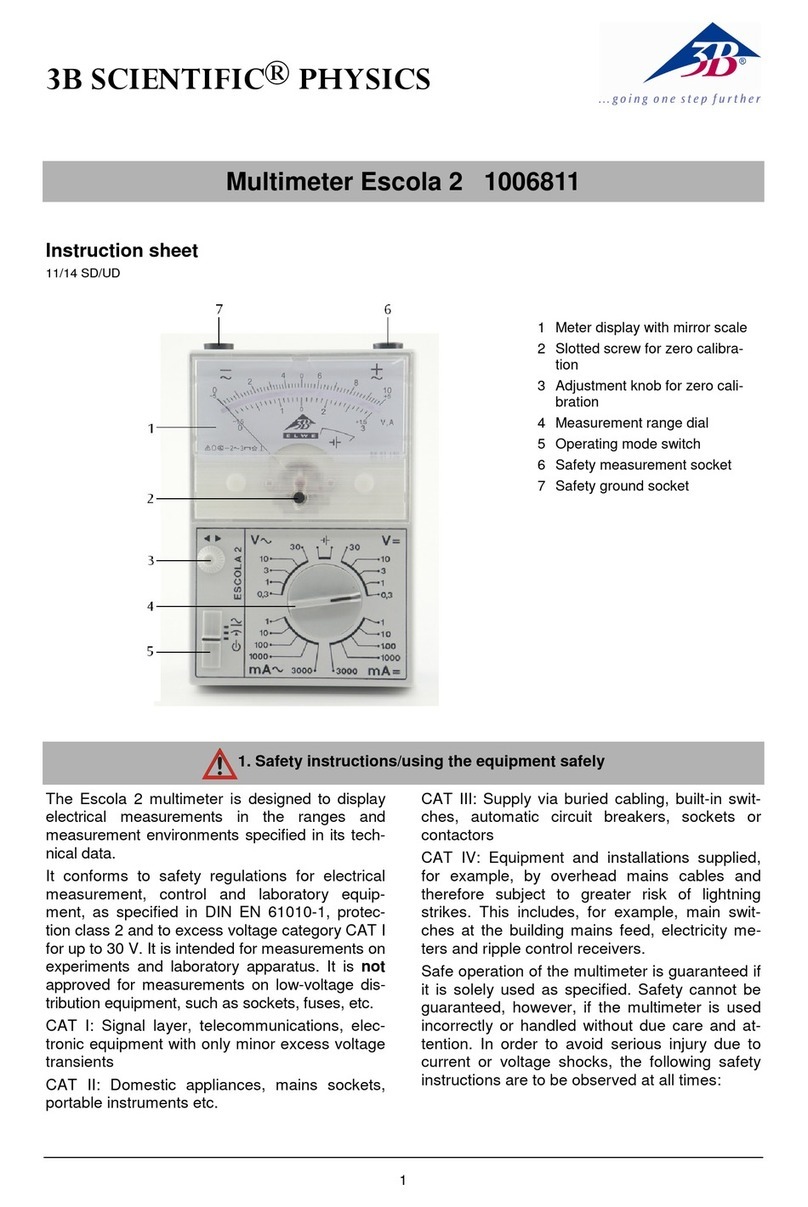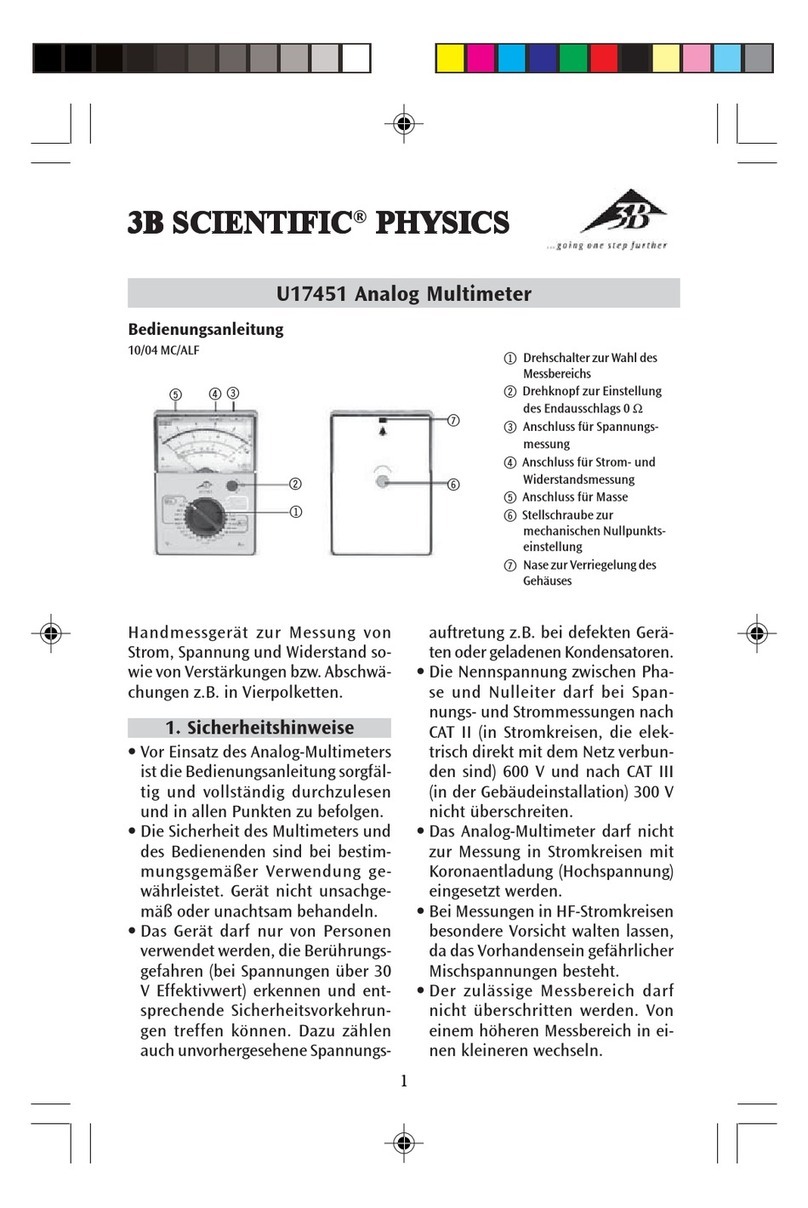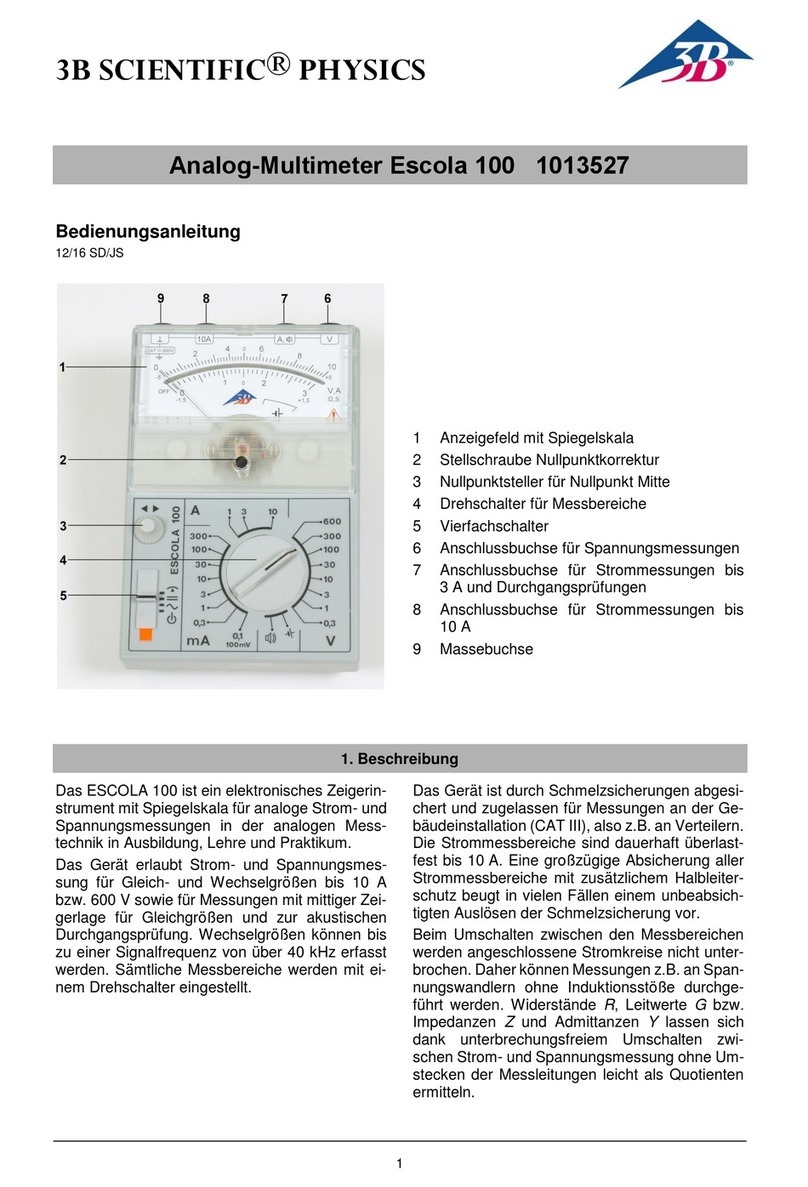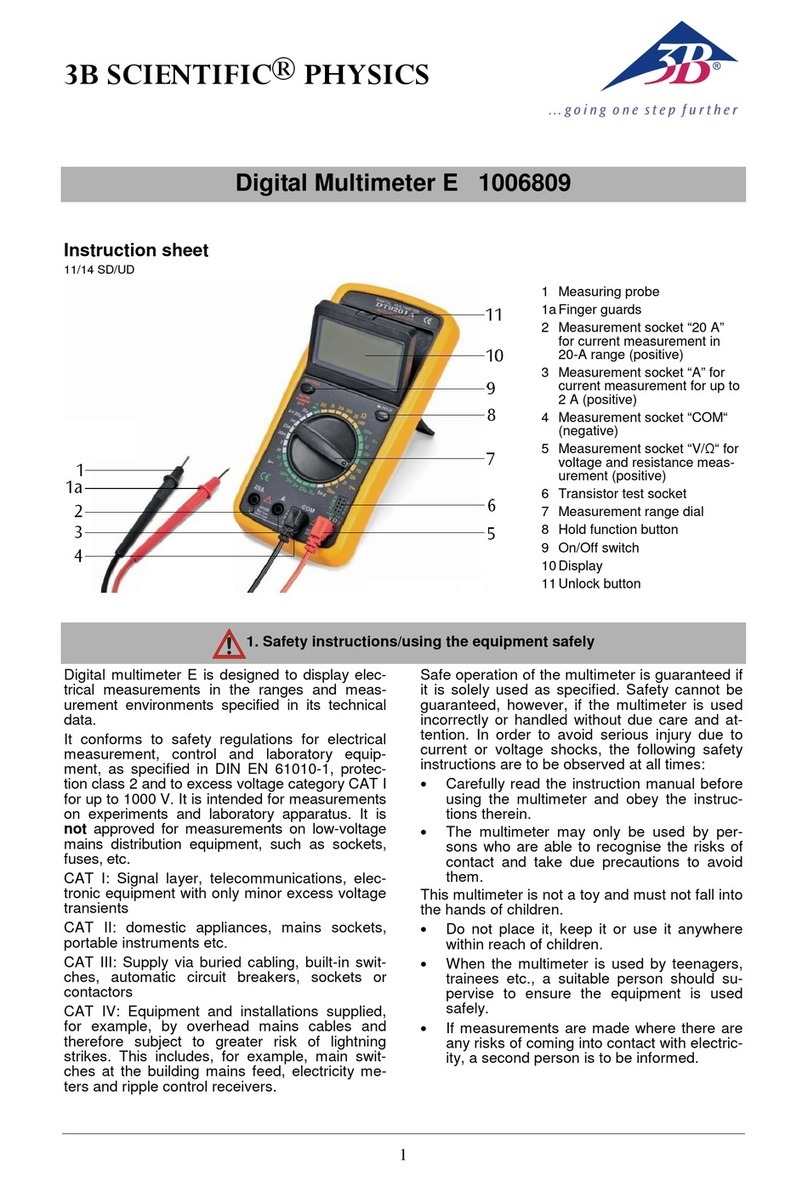2
3. Safety instructions
The analogue nultimeter Escola 30 conforms tosa-
fety regulations for electrical measurement, control
and laboratory equipment, as specified in DIN EN
61010-1, protection class 2 and to measuringcate-
gory CAT I for up to 30 V. It is not approved for
measurements on low-voltage distribution
equipment, such as sock-ets, fuses, etc. The nom-
inal voltage must not exceed 30 V.
The meter is intended for measurements within its
measuring ranges and in a measuring environ-
ment as described in detail in the course of this
manual. Safe operation of the multimeter is gua-
ranteed if it is solely used as specified. Safety can-
not be guaranteed, however, if the multimeter is
used incorrectly or handled without due care and
attention.In order to avoidserious injury due to cur-
rent or voltage shocks, the following safety instruc-
tions are to be observed at all times:
Carefully read the instruction manual before
using the multimeter and obey the instruc-
tions therein.
The assumption needs to be made that unfore-
seen voltages may be present in the vincinity of
objects being measured (e.g. faulty equipment).
Before using the multimeter, check the hou-
sing and measuring leads for damage and if
there should be any malfunctions or visible
damage, the multimeter is not to be used. Pay
specific attention to the insulation for the mea-
suring sockets.
The authorised measuring range is not to be
exceeded. If measurements are made when
the magnitude of the variable is unknown, al-
ways select a large measuring range before
shifting down to lower ones.
Before using the analogue multimeter to
check that a voltage source is not exhibiting
any actual voltage, check that the meter is
working properly by selecting the battery test
function.
When measuring current, make sure the elec-
tricity is turned off before the analogue multi-
meter is connected into the circuit.
When making measurements, always con-
nect the ground lead first. Disconnect the sig-
nal measurement lead before unplugging the
ground.
Turn off the multimeter before opening the
casing, disconnect the power to the circuit and
the measuring leads from the multimeter.
When the multimeter is used by teenagers,
trainees etc., a suitable person should super-
vise to ensure the equipment is used safely.
4. Operation
4.1 To switch on:
Set the three-way switch to or .
4.2 Checking battery charge:
Set the three-way switch to .
Disconnect all measuring leads.
Set the rotary switch to .
If the battery is sufficiently charged, the needle will
point to the following range indication, . If
this is not the case, the battery will need to be re-
placed immediately.
4.3 Zero point calibration:
Set up the analogue multimeter either hori-
zontally or vertically
Set the three-way switch to .
Turn the rotary switch to 30 V=.
Connect the sockets together with a short
connecting lead.
Turn the zero-point trimmer screw to adjust
the zero point as needed.
4.4 Zero point calibration for centre zero
point:
For measurements of DC current and voltage, the
zero point of the scale can be moved to the centre
of the dial.
Disconnect all measuring leads.
Set the three-way switch to and turn the
rotary switch to a DC current or voltage range,
Use the zero-point trimmer to line up the nee-
dle precisely in the centre of the dial.
4.5 To switch off:
Set the three-way switch to .
When the meter is turned off, the needle points to
.
4.6 If a measurement is interrupted by battery
cut-out:
After 45 minutes of use, the multimeter is auto-
matically shut off and the needle will then point to
.
To switch back on:
Set the three-way switch of the analogue mul-
timeter to off and then use it to turn the meter
back on.



